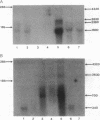Abstract
Transgenic pigs were generated that produced human protein C in their milk at up to 1 g/liter. The gene construct was a fusion gene consisting of the cDNA for human protein C inserted into the first exon of the mouse whey acidic protein gene. These results demonstrate that the mouse whey acidic protein gene contains regulatory elements that can direct cDNA expression at high levels in the pig mammary gland. Recombinant human protein C that was produced at about 380 micrograms/ml per hr in transgenic pig milk possessed anticoagulant activity that was equivalent to that of protein C derived from human plasma. These studies provide evidence that gamma-carboxylation can occur at high levels in the mammary gland of a pig.
Full text
PDF
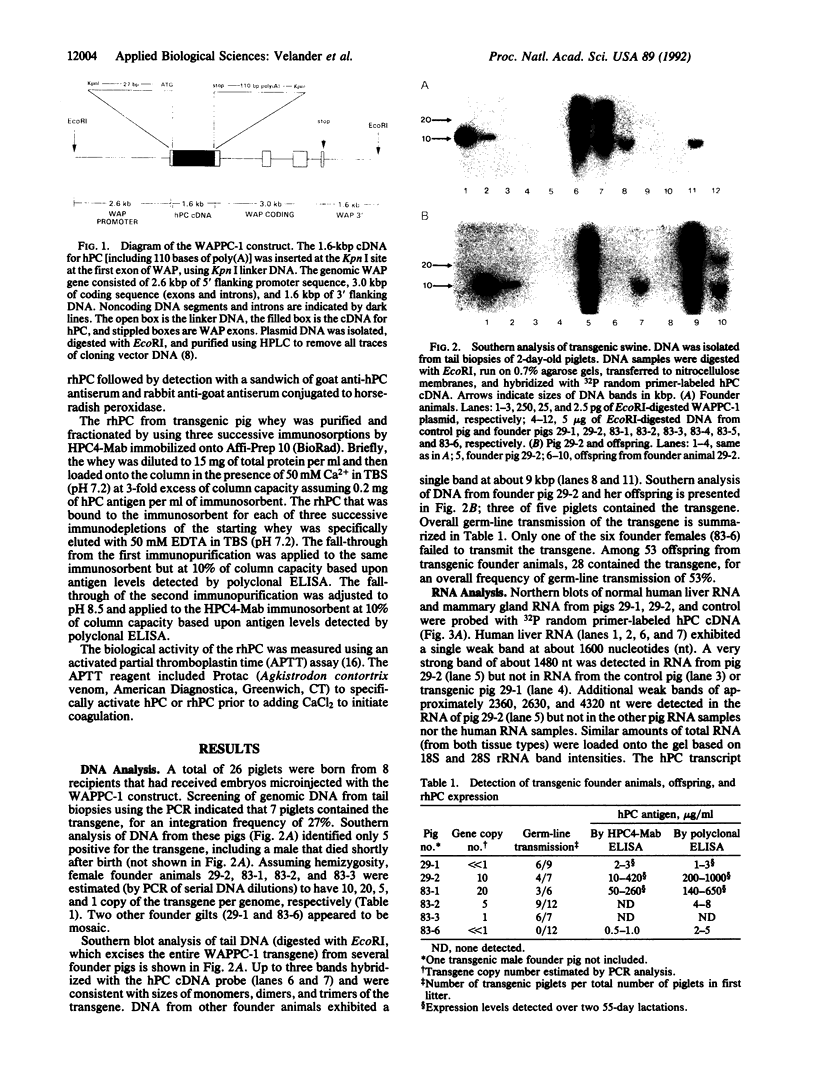
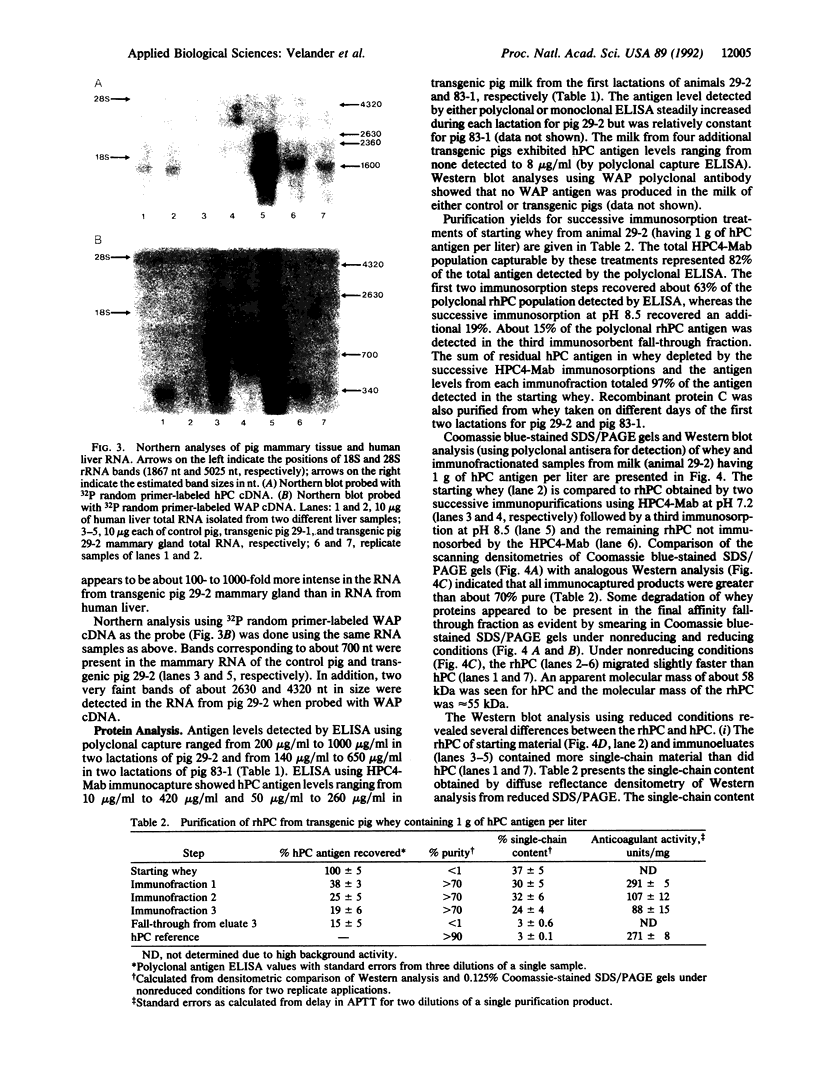
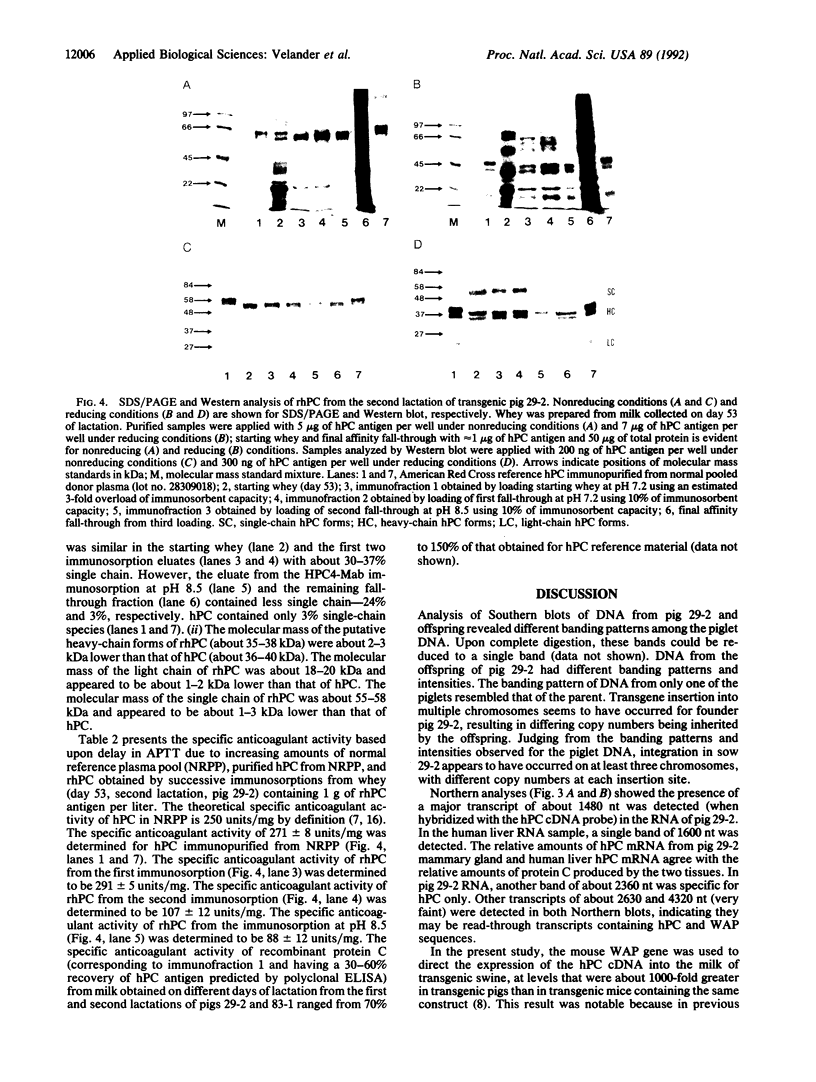
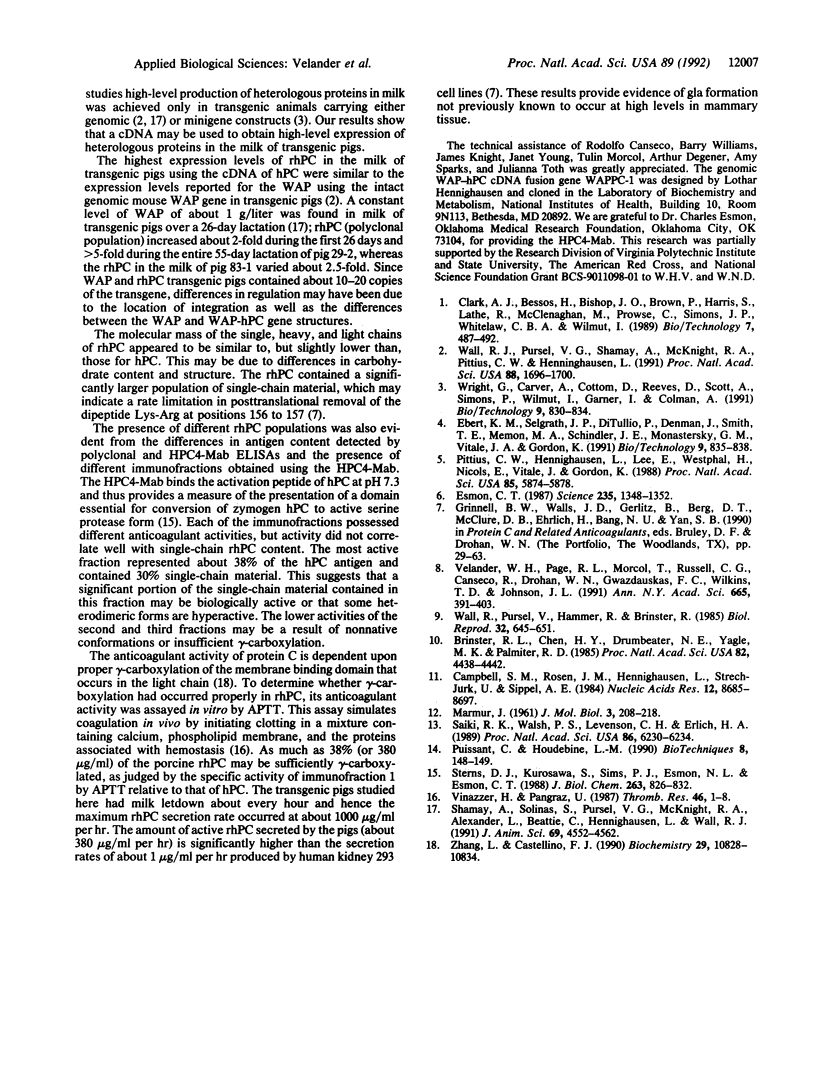
Images in this article
Selected References
These references are in PubMed. This may not be the complete list of references from this article.
- Brinster R. L., Chen H. Y., Trumbauer M. E., Yagle M. K., Palmiter R. D. Factors affecting the efficiency of introducing foreign DNA into mice by microinjecting eggs. Proc Natl Acad Sci U S A. 1985 Jul;82(13):4438–4442. doi: 10.1073/pnas.82.13.4438. [DOI] [PMC free article] [PubMed] [Google Scholar]
- Campbell S. M., Rosen J. M., Hennighausen L. G., Strech-Jurk U., Sippel A. E. Comparison of the whey acidic protein genes of the rat and mouse. Nucleic Acids Res. 1984 Nov 26;12(22):8685–8697. doi: 10.1093/nar/12.22.8685. [DOI] [PMC free article] [PubMed] [Google Scholar]
- Ebert K. M., Selgrath J. P., DiTullio P., Denman J., Smith T. E., Memon M. A., Schindler J. E., Monastersky G. M., Vitale J. A., Gordon K. Transgenic production of a variant of human tissue-type plasminogen activator in goat milk: generation of transgenic goats and analysis of expression. Biotechnology (N Y) 1991 Sep;9(9):835–838. doi: 10.1038/nbt0991-835. [DOI] [PubMed] [Google Scholar]
- Esmon C. T. The regulation of natural anticoagulant pathways. Science. 1987 Mar 13;235(4794):1348–1352. doi: 10.1126/science.3029867. [DOI] [PubMed] [Google Scholar]
- Pittius C. W., Hennighausen L., Lee E., Westphal H., Nicols E., Vitale J., Gordon K. A milk protein gene promoter directs the expression of human tissue plasminogen activator cDNA to the mammary gland in transgenic mice. Proc Natl Acad Sci U S A. 1988 Aug;85(16):5874–5878. doi: 10.1073/pnas.85.16.5874. [DOI] [PMC free article] [PubMed] [Google Scholar]
- Puissant C., Houdebine L. M. An improvement of the single-step method of RNA isolation by acid guanidinium thiocyanate-phenol-chloroform extraction. Biotechniques. 1990 Feb;8(2):148–149. [PubMed] [Google Scholar]
- Saiki R. K., Walsh P. S., Levenson C. H., Erlich H. A. Genetic analysis of amplified DNA with immobilized sequence-specific oligonucleotide probes. Proc Natl Acad Sci U S A. 1989 Aug;86(16):6230–6234. doi: 10.1073/pnas.86.16.6230. [DOI] [PMC free article] [PubMed] [Google Scholar]
- Shamay A., Solinas S., Pursel V. G., McKnight R. A., Alexander L., Beattie C., Hennighausen L., Wall R. J. Production of the mouse whey acidic protein in transgenic pigs during lactation. J Anim Sci. 1991 Nov;69(11):4552–4562. doi: 10.2527/1991.69114552x. [DOI] [PubMed] [Google Scholar]
- Stearns D. J., Kurosawa S., Sims P. J., Esmon N. L., Esmon C. T. The interaction of a Ca2+-dependent monoclonal antibody with the protein C activation peptide region. Evidence for obligatory Ca2+ binding to both antigen and antibody. J Biol Chem. 1988 Jan 15;263(2):826–832. [PubMed] [Google Scholar]
- Velander W. H., Page R. L., Morcöl T., Russell C. G., Canseco R., Young J. M., Drohan W. N., Gwazdauskas F. C., Wilkins T. D., Johnson J. L. Production of biologically active human protein C in the milk of transgenic mice. Ann N Y Acad Sci. 1992 Oct 13;665:391–403. doi: 10.1111/j.1749-6632.1992.tb42602.x. [DOI] [PubMed] [Google Scholar]
- Vinazzer H., Pangraz U. Protein C: comparison of different assays in normal and abnormal plasma samples. Thromb Res. 1987 Apr 1;46(1):1–8. doi: 10.1016/0049-3848(87)90201-5. [DOI] [PubMed] [Google Scholar]
- Wall R. J., Pursel V. G., Hammer R. E., Brinster R. L. Development of porcine ova that were centrifuged to permit visualization of pronuclei and nuclei. Biol Reprod. 1985 Apr;32(3):645–651. doi: 10.1095/biolreprod32.3.645. [DOI] [PubMed] [Google Scholar]
- Wall R. J., Pursel V. G., Shamay A., McKnight R. A., Pittius C. W., Hennighausen L. High-level synthesis of a heterologous milk protein in the mammary glands of transgenic swine. Proc Natl Acad Sci U S A. 1991 Mar 1;88(5):1696–1700. doi: 10.1073/pnas.88.5.1696. [DOI] [PMC free article] [PubMed] [Google Scholar]
- Wright G., Carver A., Cottom D., Reeves D., Scott A., Simons P., Wilmut I., Garner I., Colman A. High level expression of active human alpha-1-antitrypsin in the milk of transgenic sheep. Biotechnology (N Y) 1991 Sep;9(9):830–834. doi: 10.1038/nbt0991-830. [DOI] [PubMed] [Google Scholar]
- Zhang L., Castellino F. J. A gamma-carboxyglutamic acid (gamma) variant (gamma 6D, gamma 7D) of human activated protein C displays greatly reduced activity as an anticoagulant. Biochemistry. 1990 Dec 4;29(48):10828–10834. doi: 10.1021/bi00500a016. [DOI] [PubMed] [Google Scholar]





